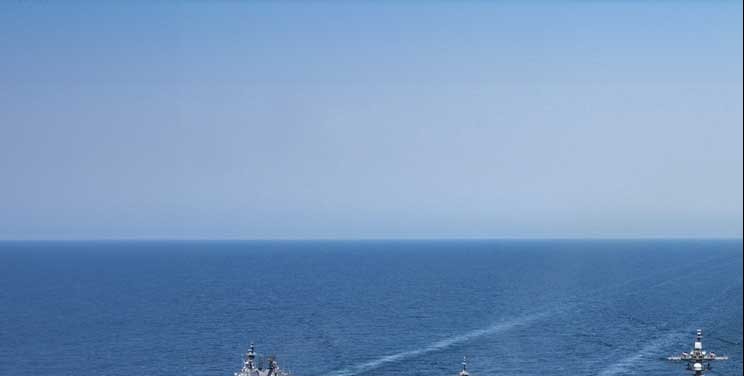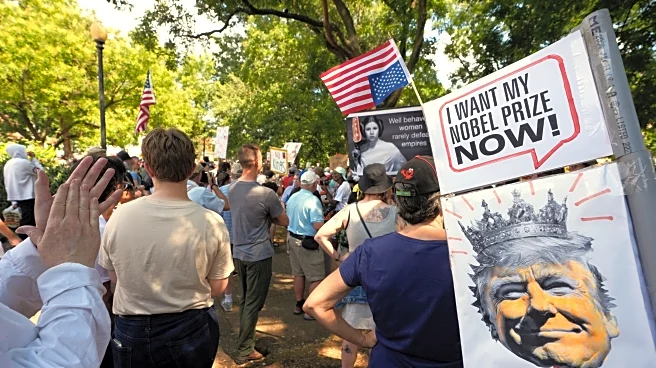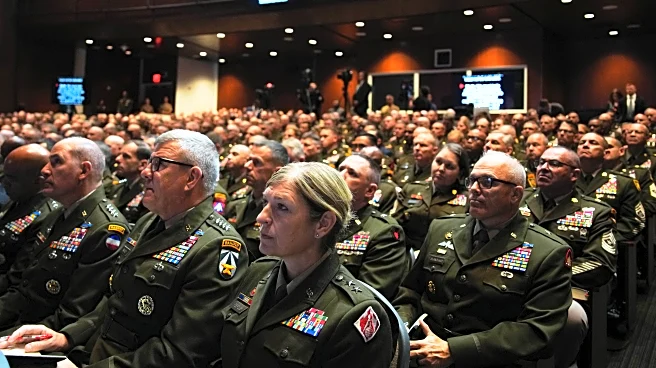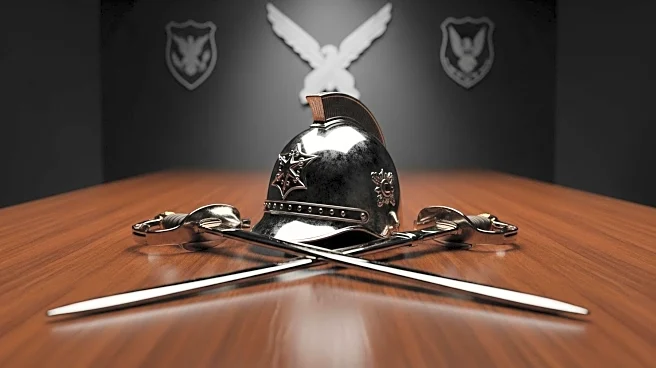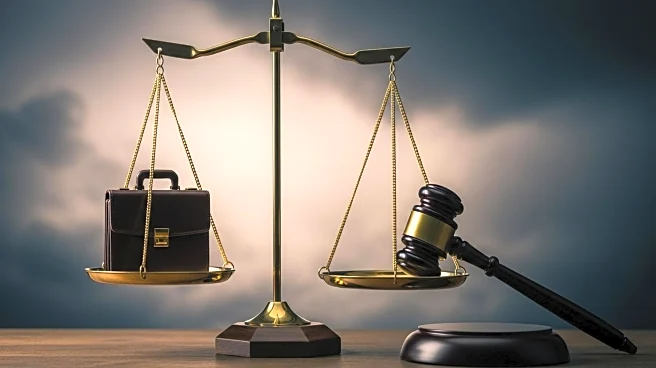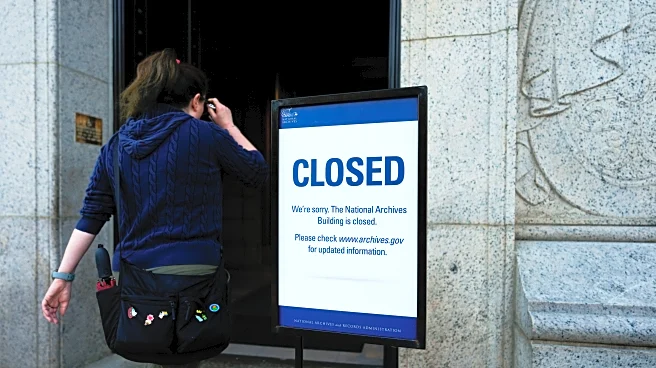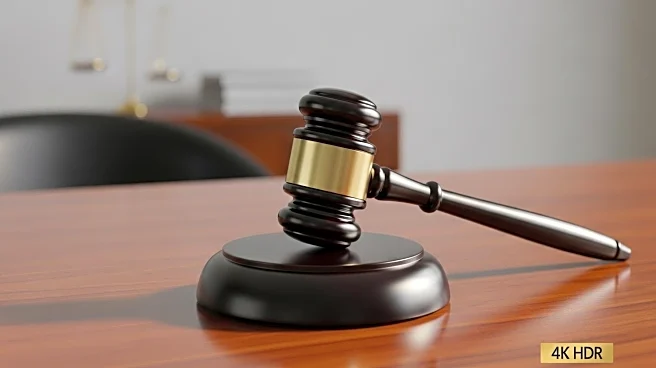What's Happening?
Navy Chief of Staff Jon Harrison has been removed from his position in the latest series of changes at the Pentagon under War Secretary Pete Hegseth. Harrison, a political appointee of President Trump, was reportedly dismissed after implementing significant changes to the Navy's policy and budgeting offices. This reorganization was completed prior to the Senate confirmation of Navy Undersecretary Hung Cao, a former Republican Virginia Senate candidate, in an effort to limit Cao's influence. The reshuffle included reassigning several aides expected to assist Cao, and plans to interview incoming undersecretary's future military aides to ensure decisions originated from the secretary's office. This move is part of a broader pattern of staff changes under Hegseth, who has previously removed several high-ranking officials, including former Chairman of the Joint Chiefs of Staff C.Q. Brown and former Chief of Naval Operations Adm. Lisa Franchetti.
Why It's Important?
The removal of Jon Harrison as Navy Chief of Staff highlights ongoing efforts by War Secretary Pete Hegseth to reshape the Pentagon's leadership and operational culture. These changes could have significant implications for military policy and administration, potentially affecting the strategic direction of the Navy and its operations. The shakeup reflects a broader attempt to align military leadership with the current administration's priorities, which may influence defense policy and budgetary decisions. The reorganization aims to ensure that new appointees, like Undersecretary Hung Cao, operate within a framework set by the Secretary's office, potentially centralizing decision-making and altering the dynamics of military governance.
What's Next?
The Pentagon is likely to continue experiencing leadership changes as War Secretary Pete Hegseth seeks to implement his vision for the department. The upcoming Navy's 250th anniversary celebration, attended by President Trump, Hegseth, and other key figures, may serve as a platform to further solidify these changes and promote the administration's military agenda. The event could also provide an opportunity for the administration to showcase its commitment to the Navy and its personnel, despite ongoing government shutdown challenges. Future appointments and reassignments may continue to shape the Pentagon's leadership structure, influencing military policy and operations.
Beyond the Headlines
The ongoing shakeup at the Pentagon raises questions about the impact of political appointees on military leadership and the potential for shifts in military culture. The removal of established leaders and the introduction of new appointees may lead to changes in how military operations are conducted and how strategic decisions are made. This could affect the morale and effectiveness of military personnel, as well as the broader defense strategy of the United States. The emphasis on aligning leadership with the current administration's priorities may also influence the long-term direction of military policy and its alignment with national security objectives.


